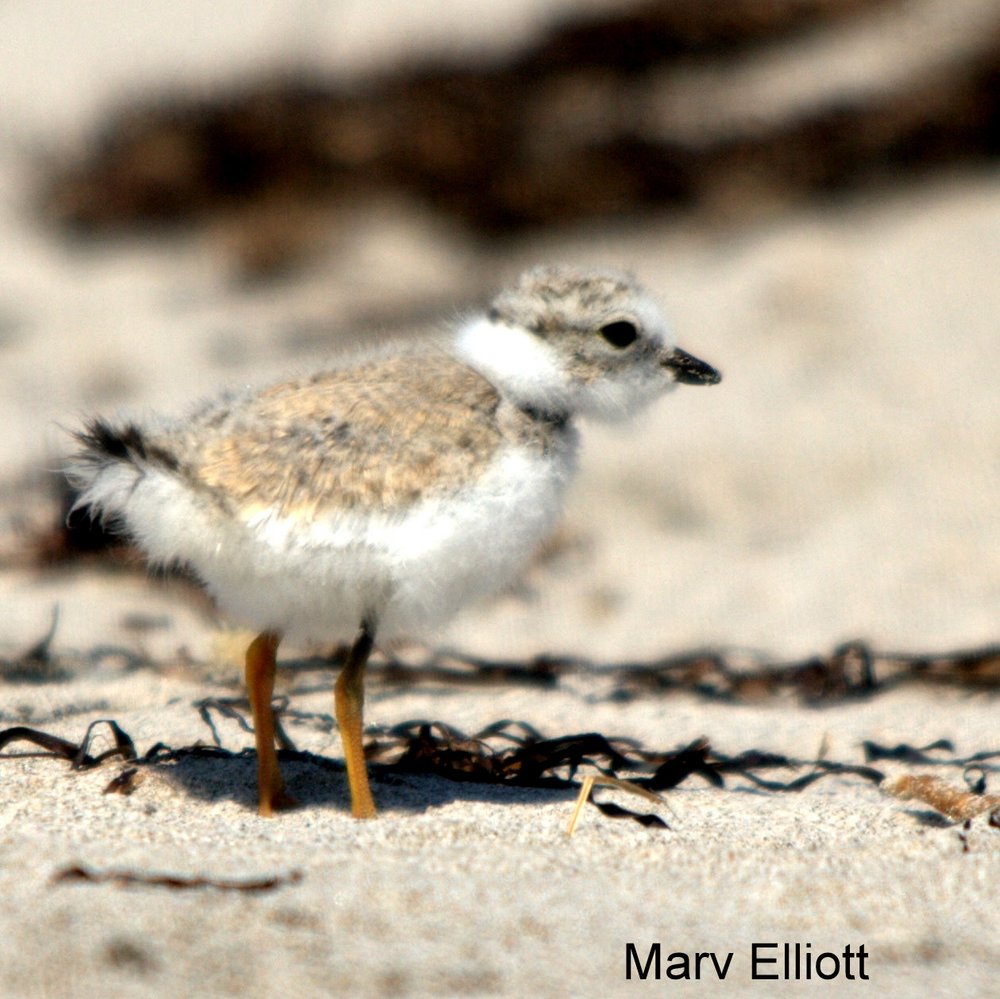We were sorry to leave Gros Morne National Park, but it was time to head to the eastern side of the island. The next four days were spent at Terra Nova National Park, where boreal forest  Boreal Chickadeemeets the Atlantic Ocean. The park has numerous trails where various warblers including Palm, Northern Waterthrush and Wilson’s warblers can be seen. Boreal Chickadees are easy to spot. We had a close encounter with a Northern Goshawk and also saw a Merlin.
Boreal Chickadeemeets the Atlantic Ocean. The park has numerous trails where various warblers including Palm, Northern Waterthrush and Wilson’s warblers can be seen. Boreal Chickadees are easy to spot. We had a close encounter with a Northern Goshawk and also saw a Merlin.
The nearby Bonavista Peninsula made a great day trip. Our first stop there was Elliston, which has a nesting colony of 300+ Atlantic Puffins.  Atlantic PuffinsVery close up and personal – some were only a few feet away. It was hard to tear ourselves away. Common Murre, Thick-billed Murre, Black-legged Kittiwake, new birds for us, were also present. And we enjoyed the Black Guillemots, with their bright red feet and red mouth-linings, as much as the puffins.
Atlantic PuffinsVery close up and personal – some were only a few feet away. It was hard to tear ourselves away. Common Murre, Thick-billed Murre, Black-legged Kittiwake, new birds for us, were also present. And we enjoyed the Black Guillemots, with their bright red feet and red mouth-linings, as much as the puffins.  Black Guillemot
Black Guillemot
The nearby town of Bonavista offered another opportunity to observe puffins and other seabirds. It also has a striking red and white lighthouse. The pride Newfoundlanders take in their towns and villages was evident when we ran across the mayor and a group of young people picking up debris along the shore (just as we do here on  Bonavista LighthouseGreen-up Day).
Bonavista LighthouseGreen-up Day).
Back on the west coast we spent two nights at Blow Me Down Provincial Park (it’s not windy; that was the exclamation of a sea captain when he saw the area). Local trails led us to isolated coves and along the way we saw American Tree Sparrow and White-winged Crossbills, winter visitors for us, as well as Fox Sparrow seen in Vermont only during migration.
L’Anse aux Meadows, on Newfoundland’s Northern Peninsula, is the site of a Viking settlement 1,000 years ago and a fascinating and beautiful spot in itself. After a tour of the national historic site (and World Heritage Site), we took a stroll and saw more Common Eider with young, a pair of White-winged Scoters and a Common Redpoll. Our accommodations on the Northern Peninsula were at Pistolet Bay Provincial Park, where moose were frequent visitors to our campsite. Tours of nearby Burnt Cape Ecological Reserve are available for aficionados of arctic plants.
Our last two nights on the island were spent at J. T. Cheeseman Provincial Park in the south near where the ferry departs. It has a great variety of birds. Red-throated Loon, Black-bellied Plover (still in breeding plumage), Semipalmated Plover, Least Sandpiper and juvenile Sanderling were present as well as nine species of warblers. Piping Plovers breed here.  Piping Plover chickAt nearby Codroy Valley Provincial Park we were fortunate to see Piping Plover chicks – big oohs and aahs.
Piping Plover chickAt nearby Codroy Valley Provincial Park we were fortunate to see Piping Plover chicks – big oohs and aahs.
Newfoundland is an easy and comfortable place to travel. Campgrounds, particularly the provincial parks, and a plethora of bed and breakfasts are the best way to get to know the people and the geography. We learned about many a side trip or hiking trail in conversations with local Newfoundlanders, park staff, and fellow travelers.
If you’re traveling with non-birders, there is plenty to do. Everywhere the scenery is beautiful and many villages and towns have their own hiking trails to take advantage of it. A whale watch trip is never far off and, if you’re early enough in the season, there is always the potential to see an iceberg. We were a little late and saw the remaining ice cube of a ‘berg as it floated into oblivion.
I’ll end here and resist the temptation to say we only saw the tip of the iceberg, but there was a lot we didn’t have time to see in Newfoundland. There could be another trip in our future. Lots of good information on traveling to Newfoundland can be found at the Newfoundland tourism website.